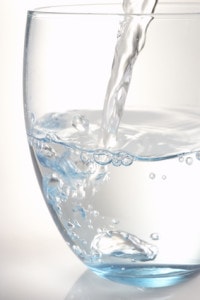“How inappropriate to call this planet Earth, when clearly it is Ocean.” -Arthur C. Clarke
 Do You Know These Water Facts?
Do You Know These Water Facts?
- 80% of Earth’s surface is water.
- Only 1% of Earth’s water is suitable for drinking.
- About 70-75% of your body is water. Bones are 25% water. Human blood is 83% water. Brain tissue is 85% water.
- A person can survive without food for more than 30 days, but less than a week without water. Everybody needs about 2 1/2 quarts of water per day to maintain health.
- Signals of dehydration include heartburn or stomach ache, non-infectious recurring or chronic pain, low back pain, headache, mental irritation and depression, and water retention.
- A dry mouth is the last outward sign of extreme dehydration. Damage occurs to the body at a persistent lower level of hydration.
- Thirst requires water. Soda pop, coffee, or alcohol are poor substitutes because they contain dehydrating agents that actually deplete water from the body’s reserves
(From information on the Internet, including “Dehydration Handout,” by Thomas Stearns Lee, N.MD.) <www.naturodoc.com>
Types of Water
All water is not created equal. Just because water has been put in a bottle does not guarantee its purity. Bottled water is regulated no more strictly than municipal water – and about 25% of bottled water comes straight out of the tap! The other 75% may be one of the water types defined below.
The container itself must also be considered. Reusable five-gallon plastic jugs may leach dangerous chemicals; in fact, we don’t recommend drinking water out of plastic bottles because endocrine disruptors in the plastic can leach into the water. Glass bottles are the safest.
Artesian – Water from a well tapping a confined aquifer in which the water level stands at some height above the top of the aquifer.
Deionized – Water produced by a process of deionization.
Demineralized – Water produced by distillation, deionization, reverse osmosis or other suitable process.
Distilled – Water produced by a process of distillation.
Drinking – Water that is intended for human consumption and is sealed in containers with no added ingredients, except that it may optionally contain safe and suitable antimicrobial agents. May come from a spring, a well, or directly from the tap, and meets the same health and safety standards as tap water. May or may not be filtered. Purity and taste vary widely.
Filtered – Water from which some impurities (chlorine and sediment) have been removed; however, most metals and chemicals remain. Purity about the same as spring water.
Mineral – Water coming from a source tapped at one or more boreholes or springs, originating from a geologically and physically protected underground water source, with higher impurity level than spring water. Strong taste; often metallic aftertaste.
Natural – Spring, mineral, artesian, or well water derived from an underground formation or water from surface water that only required minimal processing, is not derived from a municipal system or public water supply, and is unmodified except for limited treatment.
Purified – Water from which all types of impurities have been significantly reduced, by distillation, deionization, reverse osmosis or other suitable process. Clean, fresh taste, no aftertaste.
Reverse Osmosis – Water produced by a process of reverse osmosis.
Sparkling – Water that, after treatment and possible replacement with carbon dioxide, contains the same amount of carbon dioxide that it had at emergence from the source.
Spring– Water from an underground formation from which the water flows naturally to the surface of the earth. Bacteria usually eliminated by chlorination, but other contaminants remain. Taste varies.
Well – Water from a hole bored, drilled or otherwise constructed in the ground that taps the water of an aquifer.
